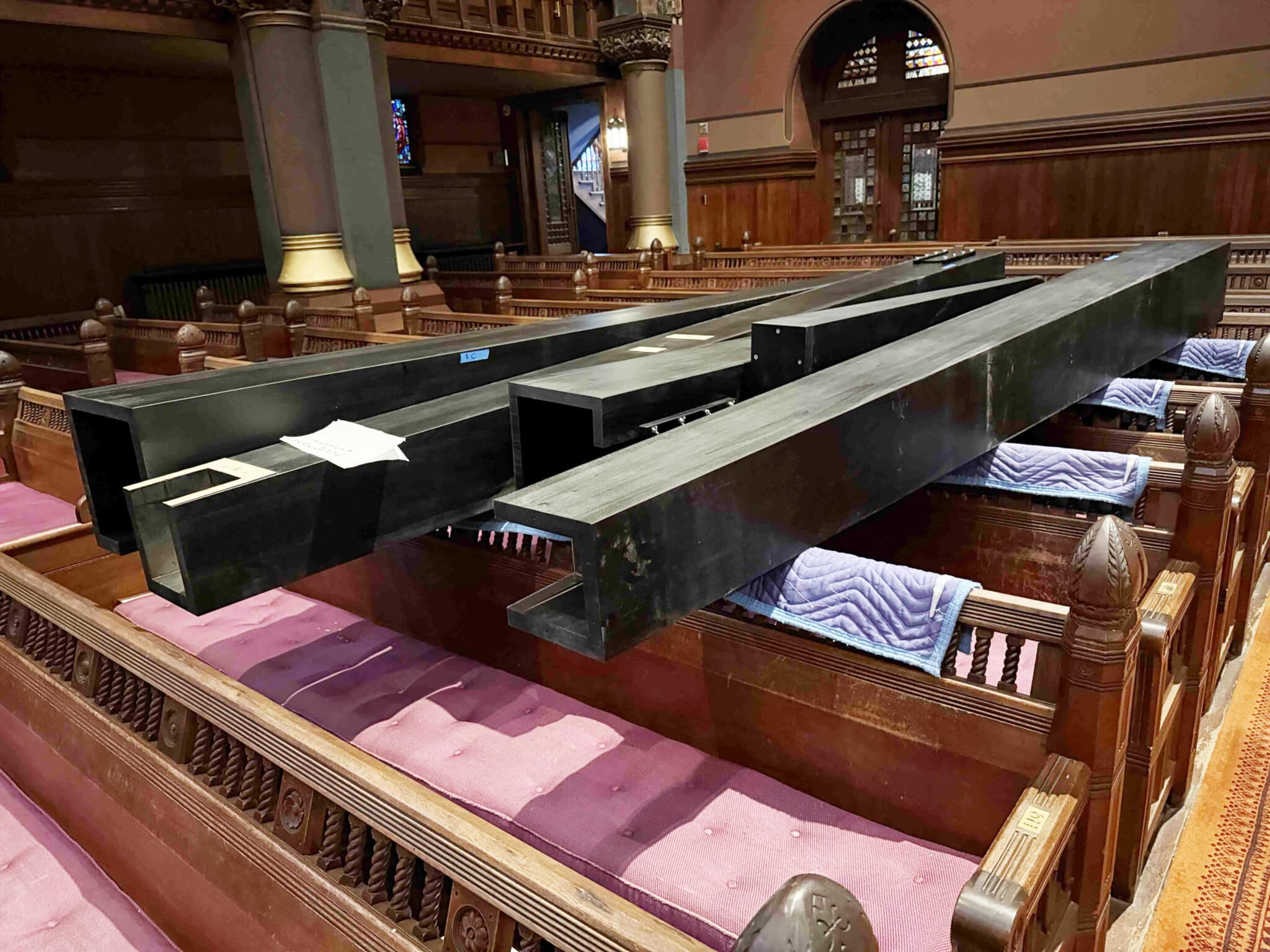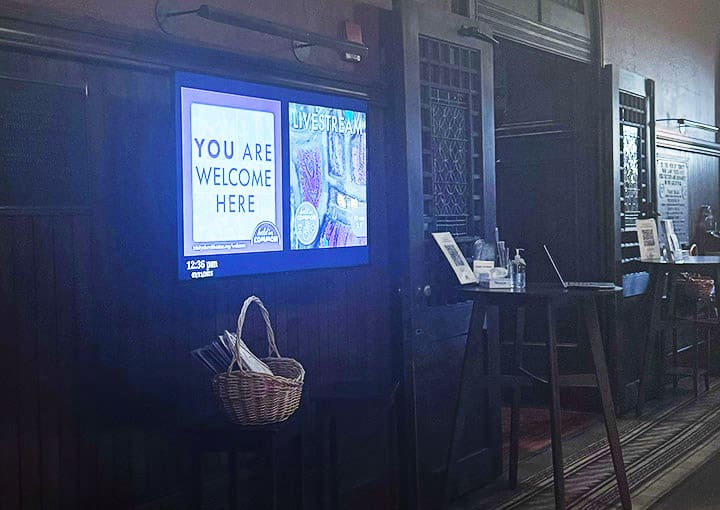Dear Trinity Church and friends,
Grace and Peace and greetings. I hope this message finds you and yours well.
I am excited to write with word of two enrichments to the sounds and sights of our common life here at Trinity: a new rank of pipework for our organ, and digital signage in the Narthex. I am especially delighted to introduce the stewards of each project – our Director of Music, Colin Lynch, and our Manager of Archives and IT, Sandy Marxen – to share the detail (below) of each advance. I am also grateful to Kevin McLaughlin, our Director of Facilities, and our stellar Facilities team, for their collaboration with staff and the vendors who have partnered with us.
Lenten blessings,
The Rev. Morgan S. Allen
Rector

Dear Trinity Church,
In 2019, Trinity undertook an ambitious project to return the Nave organ (the pipes at the rear of the church) to its original 1926 intention. Though its musical reconstruction was completed in 2020, Trinity’s nave organ has finally received its crowning glory: the 32-foot Bombarde! Due to the complexity of building and installing such large pipes, the Bombarde was planned as a later addition to the 2019 project.
These 10 pipes produce the organ’s most profound bass tones, extending to 16hz (the C below a piano’s low A) and providing a thunderous climax to hymns, anthems, and organ voluntaries. The largest pipe is 32 feet long (mitered to a height of 20 feet to fit under barrel vault) with a wind pressure of 20 inches. These enormous pipes live against the back wall on the Boylston side of the organ and are hidden behind the facade.
The 1926 organ was built by Ernest M. Skinner, arguably the most important figure in American organ building, and was much celebrated by organists of the time. Louis Vierne, the blind organist of Notre Dame in Paris, was quite fond of Trinity’s instrument and had even hoped that Skinner would build a similar organ console for Notre Dame. Since its installation, the organ had become subject to the trends of organ building and the whims of various musicians. One of the first changes was by Skinner himself, whose company was contracted to build a new instrument for Washington National Cathedral yet had become low on resources for building large pipes. In 1938, he convinced Trinity to replace its 32′ Bombarde with a much smaller substitute and he transferred the pipes to the National Cathedral where they remain in use today. Thank you to the many hands and minds who have made this exciting addition possible.
With excitement,
Colin Lynch
Director of Music
Hello, Trinity Church,
Always read the plaque.[i]
My fondness for bronze and stone plaques extends to signs of all kinds: museum identification labels, MBTA maps, sandwich boards, gravestones, sidewalk stamps, maintenance hole covers, nicknames painted on JetBlue aircraft, and more. Every sign is a chance for me to learn something new, consider what I’ve overlooked, and reconsider what I’ve taken for granted.

This week we extended the reach of Trinity’s excellent publications by putting some of our content on digital signs in the narthex. The purpose is to extend a warm welcome to all and an invitation to visitors, showcase our ministries, and promote opportunities to get more involved.
Navigating a church like Trinity, especially for the first time, can be a very daunting experience. “Which of these massive doors on every side is the entrance? Once I’m inside, which way should I turn? What are my options? Who do I talk to? What will they ask? Do *I* even know what I’m doing here?” Signs provide people a place to focus that quickly orients them and gives them confidence to take the next step.
But why are they digital signs? Because humans are visual creatures. According to the internet, about 30% of our brain is devoted to sight, compared to 8% for touch, 5% for smell, and 3% for hearing. We are particularly sensitive to anything that moves in our field of vision. With rotating content, digital signs grab our attention. And, on a practical level, content is much easier and more economical to update frequently this way.
Thank you to our ushers, shop, tour, communications, and facilities staff who helped define, create, and install this addition.
Best,
Sandy Marxen
Manager of Archives and IT

